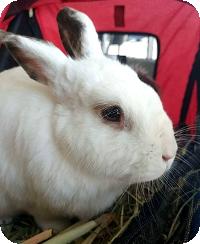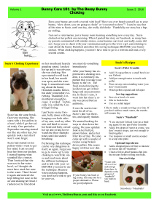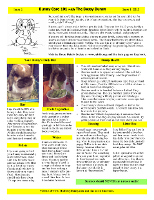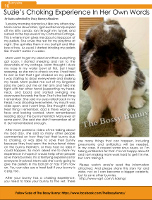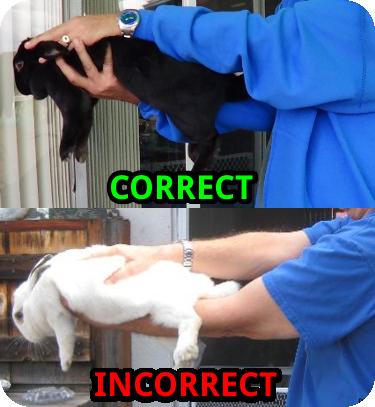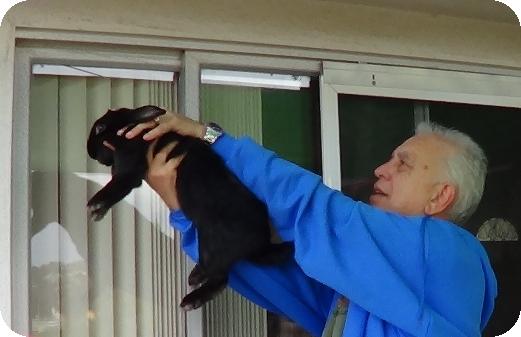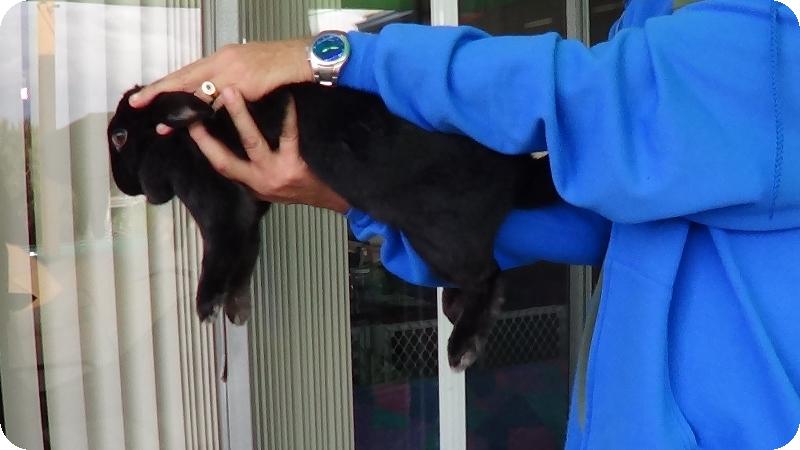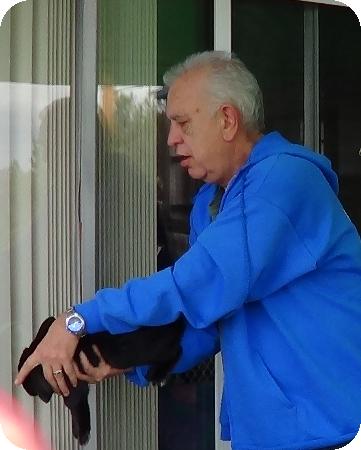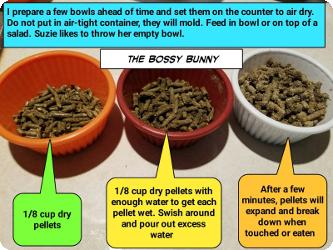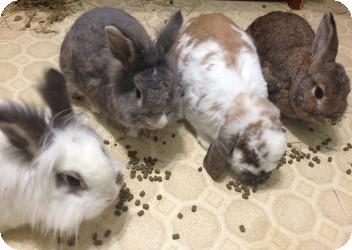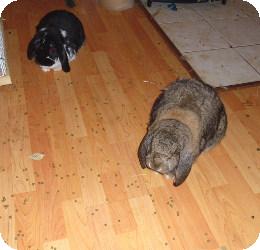
EMERGENCY! If your rabbit is choking now CLICK HERE! This section has a group of videos that can quickly show how to do the Centrifugal Swing and "Heimlich maneuver" techniques. CLICK HERE! The following information is provided for reference only. Ask your rabbit savvy vet about this subject before you need to use it! They can show you the correct technique for your rabbit! There can be very serious negative consequences using the techniques below! Very Dangerous: Rabbits can not vomit and therefore choking is a very extream issue with them. Stephan Flores (The Bunny Guy) wanted to express how very serious using the "Heimlich maneuver" is! It is possible to break a rabbits neck or become severely injured. Anything from fractured vertebrae to even death. Ask your rabbit savvy vet about this subject before you need to use it!!! Most all choking information for rabbits (on the web) is based on "The Bunny Guy" or Dana Krempels's posted information. Choking = Vet ASAP: Even after a choking event the rabbit should see a rabbit savvy vet as soon as possible. If the rabbit dislodges the food/blockage itself (or with help) most likely the rabbit has aspirated. Many vets will put the rabbit on antibiotics to prevent...
Things to look for if a rabbit is choking
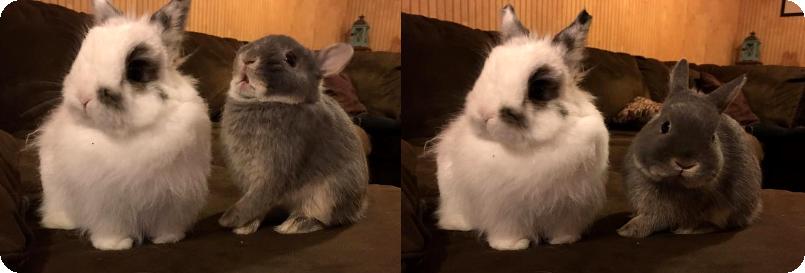 CharlotteM. was giving her pair Luna and Ollie a few tiny bits of dehydrated papaya and taking a few pictures. Ollie lifted his head as he started to choke on a small bit of papaya, he may have not chewed it. Ollie was able to clear it right away and is perfectly fine now, giving Charlotte a big scare. Info and pics used with direct permission from CharlotteM.
CharlotteM. was giving her pair Luna and Ollie a few tiny bits of dehydrated papaya and taking a few pictures. Ollie lifted his head as he started to choke on a small bit of papaya, he may have not chewed it. Ollie was able to clear it right away and is perfectly fine now, giving Charlotte a big scare. Info and pics used with direct permission from CharlotteM.
Methods & Techniques "Centrifugal Swing"  Many refer to this technique as the "Bunny Heimlich," when in fact swinging the rabbit tries to take advantage of centrifugal force. This force will hopefully push the bunny's internal organs forward and in turn force air out of the lungs, and with luck, it will clear the rabbit's trachea. The "Bunnny Heimlich" method below more closely resembles the real human Heimlich maneuver.
There are two methods to preforming this technique. The first is preformed by Stephan Flores (The Bunny Guy) as seen in the video animation to the left. Support here comes mainly from the top and bottom, but also supplies good support to the sides. The video to the right is an example by Dr. Dana Krempels (a stuffed toy rabbit is used). The clip from the HRS 2014 Educators Conference in St. Louis. Please check out her full lecture here. It includes many topics for "Emergency Care."
Many refer to this technique as the "Bunny Heimlich," when in fact swinging the rabbit tries to take advantage of centrifugal force. This force will hopefully push the bunny's internal organs forward and in turn force air out of the lungs, and with luck, it will clear the rabbit's trachea. The "Bunnny Heimlich" method below more closely resembles the real human Heimlich maneuver.
There are two methods to preforming this technique. The first is preformed by Stephan Flores (The Bunny Guy) as seen in the video animation to the left. Support here comes mainly from the top and bottom, but also supplies good support to the sides. The video to the right is an example by Dr. Dana Krempels (a stuffed toy rabbit is used). The clip from the HRS 2014 Educators Conference in St. Louis. Please check out her full lecture here. It includes many topics for "Emergency Care."The second example provides main support for the rabbit from the sides. Dana Krempels & Joy Gioia explains and demonstrates this technique in the House Rabbit Society's HRS Rabbit Center Master Seminar Series (DVDs). Thanks to Margo & Elizabeth for the video use. "Heimlich Maneuver" Stephan Flores (The Bunny Guy): "Hold the rabbit firmly, providing ample support for head and neck. With their nose pointing downward, firmly and gently apply pressure upwards against the diaphragm. Make a smooth movement that starts mid abdomen and sweeps upward toward their ribcage. This will apply pressure against the lungs, and by using the force of that air trying to get out, dislodge the item in the trachea. Having the buns's head pointed down will help it not fall right back into place again." Dana Krempels's explains and demonstrates the 'Bunny Heimlich.' The video clips used are from the House Rabbit Rabbit Society's HRS Rabbit Center Master Seminar Series. They are copyrighted by the HRS and used with direct permission. Thank you to Margo for the use and Elizabeth for making it happen! Video to the right..."Thoracic Compressions"
"Back Slaps"
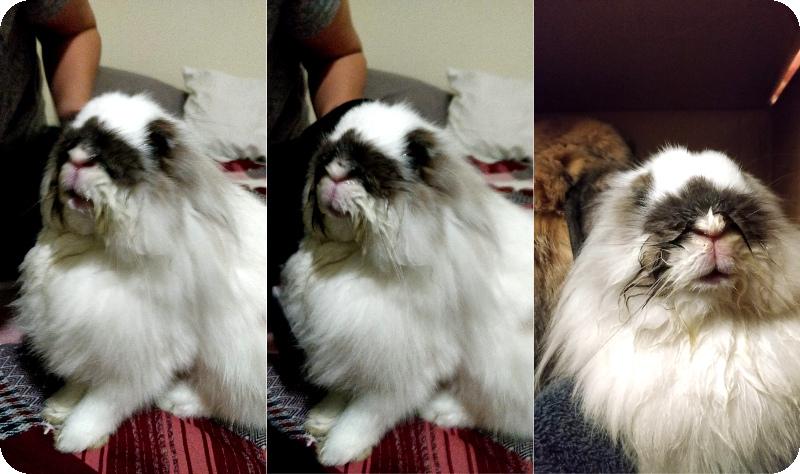
Choking Stories Gretchen ShaunaH. recounts her choking event with her bun Girl: " Our girl choked on pellets she more or less inhaled tonight. She sounded like she was vomiting but we know rabbits don't do that though. She was hiding behind the couch then was running frantically around, putting her nose in the air, pawing at her nose and face, snotting with lots of phlegm bubbling from her nose. We quickly grabbed her, wiped what we could off, googled bunny choking and as carefully as we could performed the bunny heimlich. **extremely important to support their backs during this**" "She was still bubbling at her nose but less so and her lips appeared to be somewhat bluish still. The whole ordeal lasted about 10 minutes then a 12 minute ride to the vet and 15 mins in the waiting room for triage. She's home now and seems comfortable. She ate a piece of hay the second she got in the door. We gave her some greens too entice her to eat more so we could give her meds. The vet gave us Meloxicam and anti biotics. She's drank a little water and her bonded bun has helped her clean up a bit too." " So first thing we'll change is that we won't give so many pellets at one time and monitor both of them as they eat (they mainly get pellets as a treat so they get super duper excited to eat them). Second thing is that we now know to use this bunny heimlich if we (Earth forbid) ever need to use it again. Have a read. It might save a bun. Thanks for reading." Thanks ShaunaH! Text & picture used with her permission.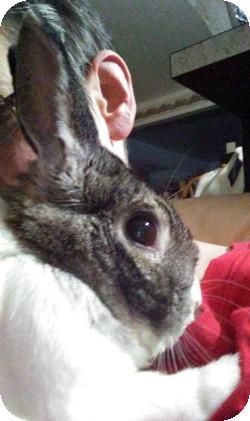
Little Girl DonnaK. recounts her choking event with her bun Little Girl using a different technique. "A couple years ago I had read that they (choking rabbits) run around in a panic which is not what she did. At that time I practiced the manuver on a stuffed toy rabbit so I would know how to do it if I needed to." "Within a minute after giving her the broken up Oxbow support (she can't chew it on her own and has tooth issues) I thought that she was sneezing (which she does on occasion). Whn I checked on her she was pawing at her mouth, she was gasping for air, had her nose pointing up in the air and mucas all over her face which are the symptoms in the link you have provided. I called Delia (a friend from Disabled Rabbits group on FB) because I know she just went throught this with her rabbit a few days ago." "This went on for at least 5 minutes while I tried the manouver over and over. I also had her face pointed down and was shaking her when she wouldn't respond to the manuever. A little food came out, but she was still gasping and starting to lose conscienceness which is when Delia told me to put my finger down her throat, and that didn't work either. She told me to syringe some water which finally worked. She stopped gasping for air and appeared to be breathing normally so I let her go and she ran about 5 feet from me and began grooming herself. Maybe the finger down the throat isn't a good idea, but after 5 minutes it was the last resort." - Thanks Donna, text & picture used with permission. Donna is with the Rabbit & Small Animal Rescue.
Suzie TracyRM shares her choking story with her girl Suzie from The Bossy Bunny: "Tuesday morning started out like any other day. Mom came downstairs, I got excited and jumped off my kitty condo, ran through my tunnel, and rushed to the top level of my Cottontail Cottage. This is where mom gives me about a teaspoon of my pellets. She saves the rest for my playtime at night. She sprinkles them in my ball pit and litter box of hay. As usual, I started inhaling my pellets like I hadn't eaten in weeks. Mom went to get my salad and then everything got scary. I started sneezing and ran to the downstairs of my cottage. Mom thought I stuck my nose in my water bowl at first, but I kept sneezing, so she ran to check on me. I had tried to eat so fast that I got choked on my pellets. I was starting to drool everywhere and shaking my head. Mom pulled me out of my kingdom (aka my pen), put me on her arm and held me tight with her other hand (supporting my head, neck, and back) and started swinging me downward towards the floor. That's the last thing I remember. She said my eyes rolled back in my head, I was drooling everywhere, my mouth was wide open, and I went limp. She thought I died. Next thing I remember, dad is there wiping my face and looking worried. Mom remembered reading about the bunny Heimlich Manuever at some point. She said she didn't remember all of it, but remembered enough. After mom posted a video of me talking about my bad day, she said so many other people commented on how they lost their bunny due to choking, or was able to save their bunny because they had seen the instructional video on the bunny Heimlich, or they had no idea it could happen. So mom asked me to share my experience in hopes it would help other people save more bunnies. It is a terrifying experience for everyone involved. Mom said she's only going to give me pellets in my ball pit or hay from now on. You can also use a treat ball if your bunny is a pig, too. After your bunny has a choking experience, you need to take your bunny to the vet. There are many things that can happen, including pneumonia and antibiotics will be needed. In my case, it caused some sinus issues, so I'm taking antibiotics for that. I'm not happy about it and I am making mom work hard to get it in me, but I am taking it. Please watch and/or read the information attached. And please share this story far and wide, not so I can become a bigger celebrity, but to save other bunnies. http://www.vgr1.com/choking/" - Thanks TracyRM, text & picture used with permission.
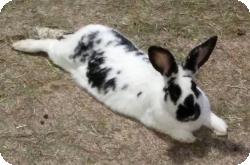
Cadbury /u/Okcool81 shares their choking story about Cadbury. "As for the story: I heard a weird noise, saw she had mucus or something coming from her nose and mouth and noticed she didn't finish her food so something was definitely up. She was panicking. I picked her up and swayed her, tapped her lightly on her back and sides. She ran off and started cleaning herself. Watched her for a while and she seemed back to normal." - Thanks /u/Okcool81, text & picture used with permission.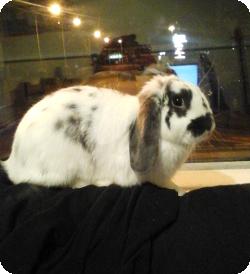
Pancake ShannonD. shares her choking story about Pancake and how she used a modified version of the "Thoracic Compressions" technique. "Very scary this morning! My Pancake was choking when I was in the middle of preparing his and Polly's pellets - He was having a very loud, panicked "sneezing fit", while sticking out his tongue constantly and rubbing his mouth and nose (no mucous present). Polly was frightened also because he was hopping around the cage, trying to stop. I knew he was choking because a girl posted a video of her bun doing the exact things same as mine and people here told her there was something lodged in its nose/throat! I was scared, but I grabbed Pancake and tried tapping his back and rubbing my hand up and down it, like the way you would wind a baby and I tried squeezing his sides as gently as possible, when (I think) a lump of hay came out, he ate it again, drank looooads of water and then ate some pellets, as if nothing happened." - Thanks ShannonD., text & picture used with permission.
Ollie LynneL. shares her choking story about Ollie and how she used a "reverse version of CPR" as a technique. "I would do anything to save my bunnies, so when my Ollie was choking on something this was the first thing that came to mind. I came home from work one night to find Ollie making a very loud gasping and wheezing sound. Every now and then, he would make a choking sound and then something like clearing your throat. Don't know if bunnies are capable of clearing their own throats. Ollie is a very calm and cooperative bun, so he was willing to let me try to help him. I Looked in his mouth and didn't see anything, so I basically just placed my whole mouth over his nose and mouth and sucked in quickly and forcefully. I did this maybe 2 or 3 times. Nothing came out into my mouth, but the vet thinks that I might have dislodged some hay that might have become lodged into the side of his throat. I did take him to see Dr. Harvey the following morning after a sleepless night. She squeezed him in before all her other appts 😍. Ollie still made the strange sounds while the vet was checking his throat. She noticed his throat was inflamed and irritated, thus the theory of the hay and me dislodging the discomfort. We went home with anti-inflammatory meds and made another appt for the following day in case the issue wasn't resolved and the Dr needed to sedate Ollie to check further down his throat. Luckily by the next morning Ollie was at least 75% better. He still was making a very audible sound, not like his usual "buzzing" sound which he has made since a young bun. I brought him in for the follow up and the Dr agreed that he was in fact better because neither of us wanted to go down the sedation route. A few more days on the meds and he was back to normal." - Thanks LynneL., text & picture used with permission.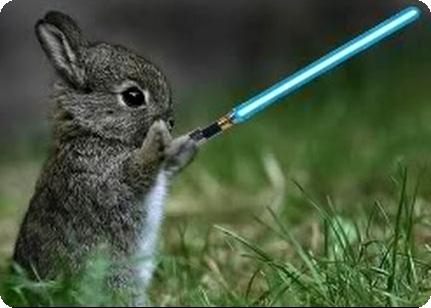
Jedi Anne Martin with HRS shares her choking story about Jedi a 8.5 year old bunny at the HRS HQ. "We had an 8.5yr old bunny at HRS headquarters, Jedi, who choked on pellets and survived. We rushed him right to the vet, and they put him in oxygen & on IV antibiotics (food in the lungs often causes pneumonia). He has been on long-term PenG injections twice a week and daily nebulizing with Gentocin, and his breathing is no longer noisy, but his chest x-rays two years later still show hazy lung fields - likely scarring in his lungs. He's doing really well now and has a new senior bunny friend."

Pip & Minnie using a 'treat ball.' Video (c) by ShelleyS. 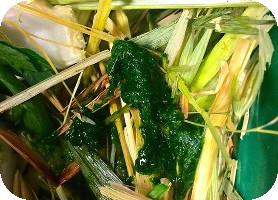
The Rabbit Doctor [Posted on fb]:  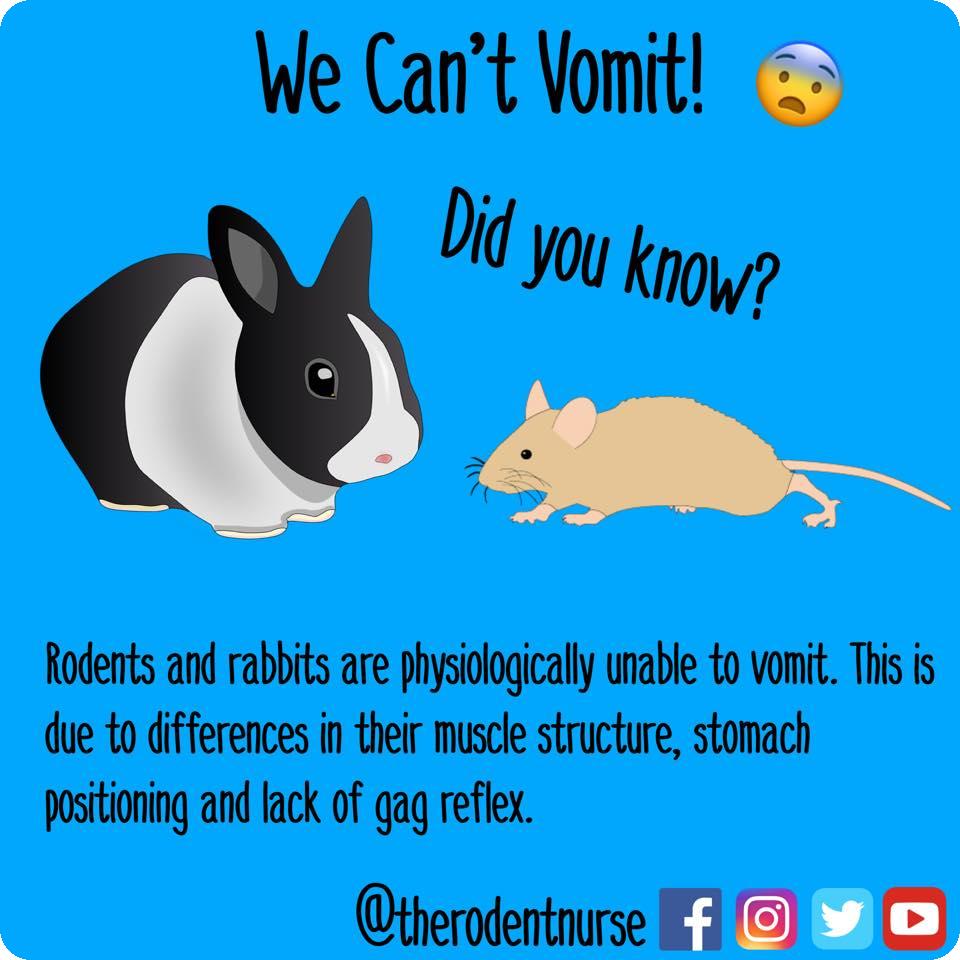
The Rodent Nurse [Posted on fb]: "The rabbit has a well-developed cardiac sphincter, which is arranged in such a way that the rabbit cannot vomit." - Jeffrey R. Jenkins, DVM, ABVP-Avian. Feeding recommendations for the house rabbit (1999); Veterinary Clinics Of North America: Exotic Animal Practice. "The lower esophageal sphincter (LES), also known as the cardiac sphincter, is an involuntary sphincter located at the bottom of the esophagus, where it connects with the stomach." - What Is a Sphincter? "A muscular sphincter or cardiac valve is present at the opening of the oesophagus in cardiac region which prevents the backward passage of food from stomach to oesophagus. Similarly a circular pyloric sphincter is present at the opening of pyloric stomach into duodenum called pylorus. It prevents the backward movement of food from duodenum to pyloric stomach." - Digestive System of Rabbit (With Diagram) 

Other references:
EMERGENCY - Centrifugal Swing Below are 3 videos that quickly show the Centrifugal Swing technique. The first is by Tamara Adlin of SpecialBunny.org. Like many, it's mislabeled as the 'Heimlich maneuver.' The second and third videos are by HRS's Dr. Krempels from two different presentations. This can be extremely dangerous, PLEASE USE CARE! - Heimlich Maneuver Below is a video that quickly shows the Heimlich maneuver. HRS's Dr. Krempels shows how to preform this technique. This can be extremely dangerous, PLEASE USE CARE! Centrifugal Swing photo credits (c) Stephan Flores and used with direct permission. New animation (c) Seal_Point_Lop and used with direct permission. HRS Rabbit Center Master Seminar Series video clips are copyrighted (c) by the HRS and used with direct permission. Thank you to Margo for the use and Elizabeth for making it happen! HRS's Rabbit Center Master Seminar Series video clips edited by RRI/VGR1. All information © of its respective owner(s). [Updated on: 08/23/24 04:07] | ||||||||||||
